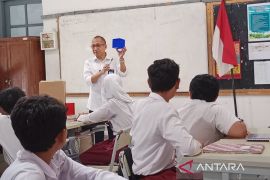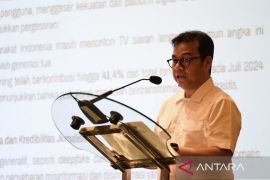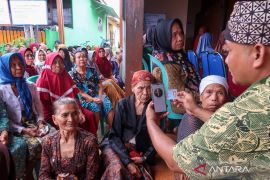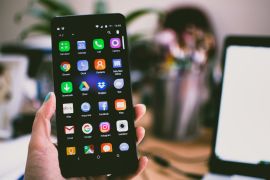In the Digital Civility Index survey conducted by Microsoft in 2020, Indonesia placed 29th out of 32 countries surveyed for online civility.
Not long after the results of the survey were published, the Communication and Information Ministry formed the Internet Ethics Committee to bolster the government's efforts for improving people’s digital literacy.
Digital literacy can be considered valuable in the Internet era. In fact, it can be said to be holding the same importance as formal education.
It has even become important enough to be listed as one of the priority issues of the G20 subforum, the Digital Economy Working Group.
Member countries have agreed that there should be an indicator standard for measuring digital capability.
The rapid development of technology has put pressure on people to not only consider how to utilize their gadgets, but also how to utilize the Internet in their daily life.
Data from the Indonesian Internet Service Provider Association has shown that the number of Internet users in Indonesia has continued to rise from year to year.
The latest survey pegged the number of Internet users at 220 million. This means that 77 percent of the Indonesian population is already connected to the Internet.
The survey also showed an increase in Internet utilization to 53.99 percent in the 19–34 age group and 47.91 percent in the 35–54 age group.
Meanwhile, as per Hootsuite data for 2022, Indonesians are spending 8 hours and 36 minutes per day on the Internet on average.
The data shows that the Internet has had a major impact in Indonesia. However, as Internet experts often say, technology is a double-edged blade, which can bring both benefits and harm.
According to a communication lecturer at Udayana University, Bali, Ni Made Ras Amanda Gelgel, not all information on the Internet is true. Unfortunately, not everyone knows how to filter information available online.
Messages circulated through WhatsApp groups are one example of this. Young or old, no one wants to miss out on the latest or important information.
However, it is not always easy to determine the accuracy of the information in a given message, and whether the information comes from competent sources.
Digital literacy can help evaluate such information. It can help people learn to identify potential hoax messages and understand the impacts of frequent exposure to hoaxes.
Digital literacy is also necessary to help people keep up with the latest developments in technology.
The Internet provides an opportunity for the creation of many new technologies, and as these technologies evolve, skills taught one day need to be updated six months later.
This is especially important when adopting new technologies. For instance, people using digital wallets that require one-time passwords (OTP) may be targeted by cybercriminals, who may impersonate digital wallet providers and request the OTP from unsuspecting users citing data verification.
Digital literacy can help address this: in addition to learning how to use OTP codes, people can be taught that OTPs must never be shared with anyone.
Related news: Ministry, varsity collaborate to improve students' digital literacy
Training digital literacy
However, this begs the question: Who needs to get digital literacy training?
Compared to formal education that usually involves children and young adults, the target group for digital literacy is much broader: it includes all those who use the Internet.
Thus, people from the age of 5 to 50 years should be exposed to digital literacy equally, but the level of education must be adjusted based on age.
For instance, when it comes to five-year-old children, the responsibility for their digital literacy falls on parents. For instance, parents can set rules on how long children can watch videos.
In addition, unlike formal education, digital literacy materials do not have to always follow age progression, but could take into account how frequently people are exposed to the Internet.
For instance, there is a competency standard in formal education wherein first-year primary school children are expected to be able to perform addition.
By the time they enter the second year of primary school, they are expected to be able to solve multiplication sums.
While digital literacy may not necessarily be able to follow this pattern, how often someone is exposed to the Internet can provide a measure of the digital skills they may require.
For instance, we do not need to provide training on how to counter DDoS (distributed denial-of-service) attacks to 30-year-old adults who use the Internet mostly for online shopping.
Digital literacy is an important long-term investment and its results may not be observable in the near future. Thus, what is taught as part of digital literacy today may not change people's behavior tomorrow.
However, positive behavior in utilizing digital technology, if introduced continuously, can become a habit and culture.
Indonesia is seeking to produce human resources that not only have digital skills, but also uphold ethics while using the Internet, especially as the 2030 bonus demographic draws near.
It is expected that the use of the Internet for positive and beneficial activities can become a culture in Indonesia due to the promotion of digital literacy under the Indonesian G20 Presidency and government collaboration with various parties.
Related news: Metaverse development to positively impact national economy: Minister
Related news: Ministry, stakeholders to train public in digital literacy
Translator: Natisha A, Fadhli Ruhman
Editor: Sri Haryati
Copyright © ANTARA 2022












